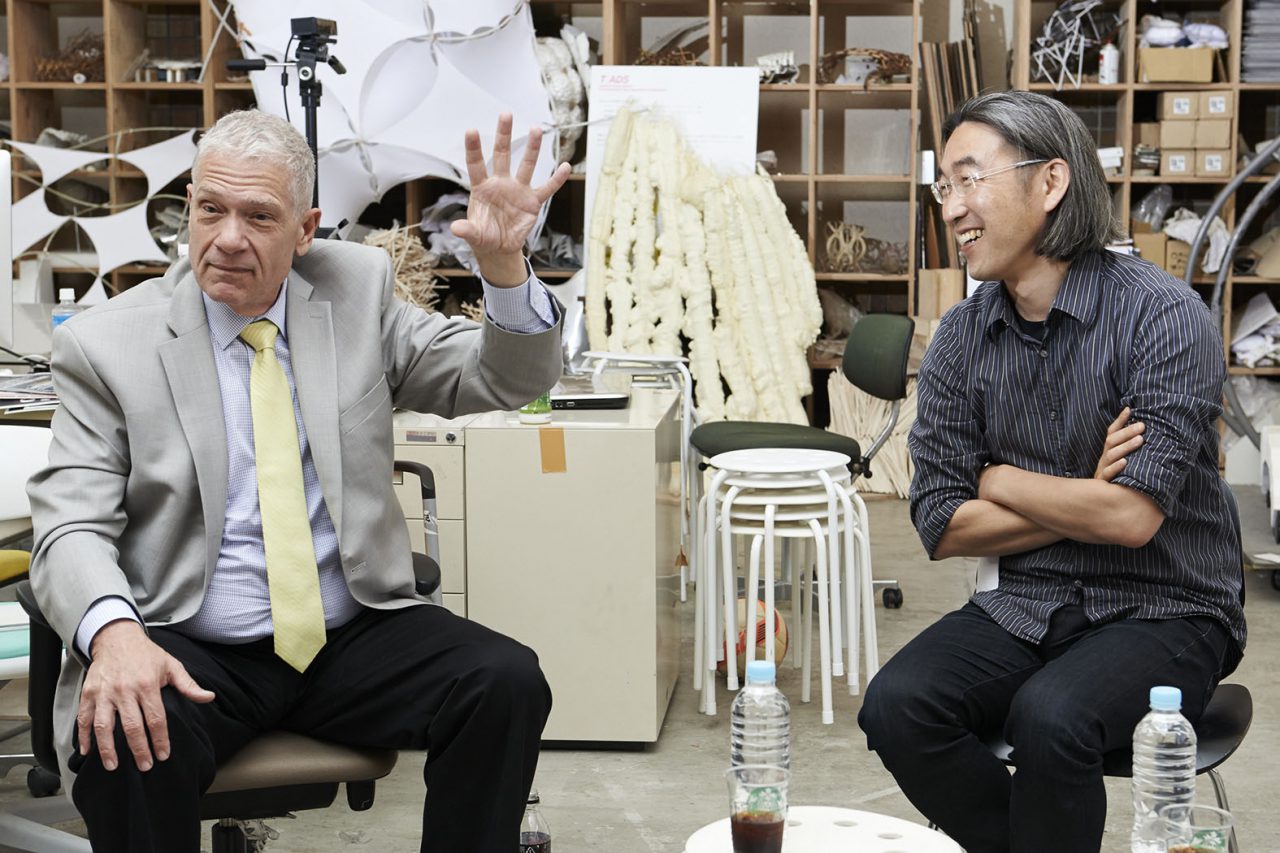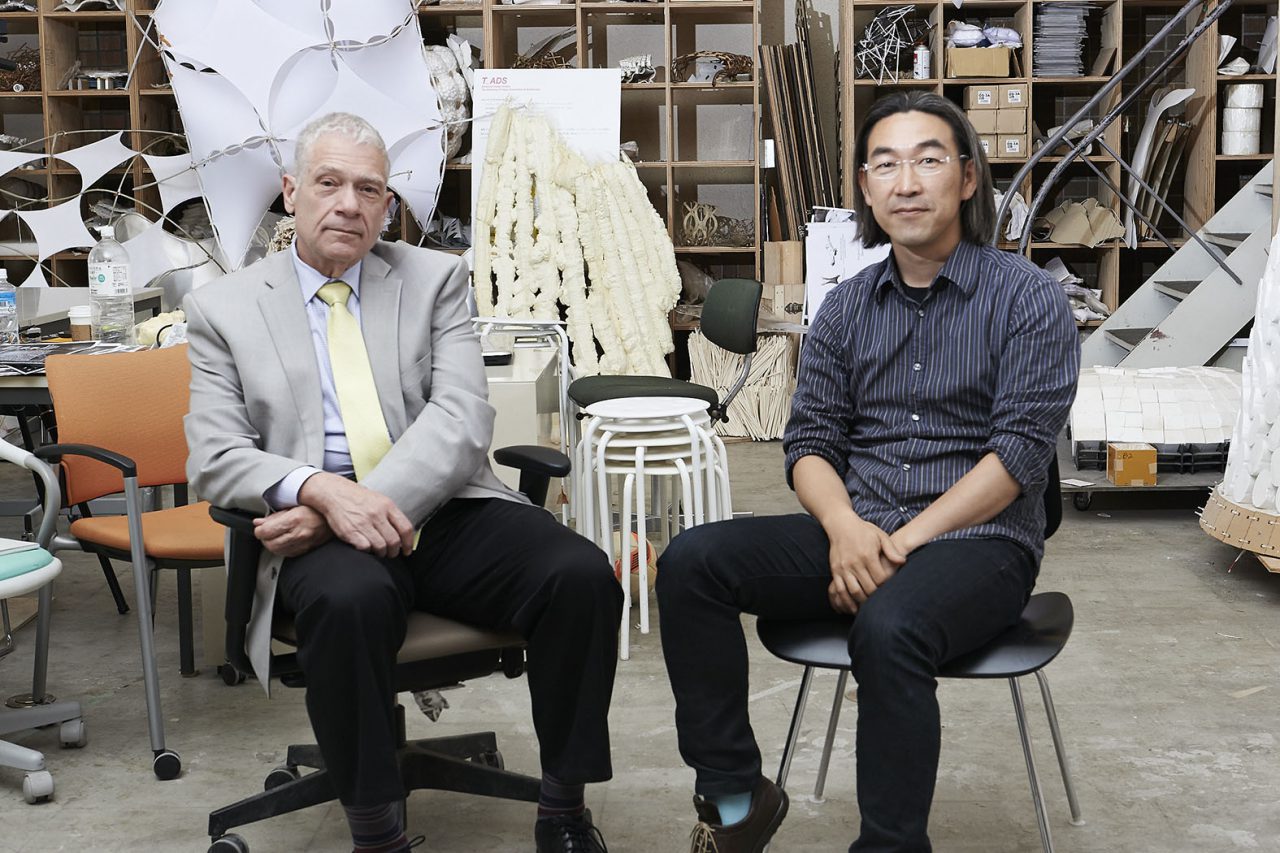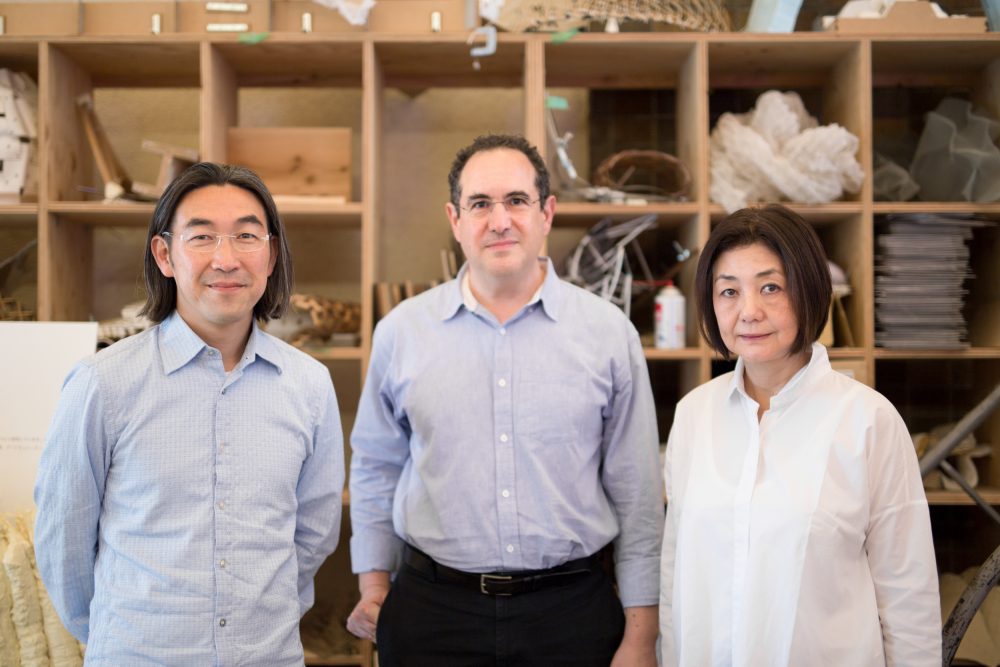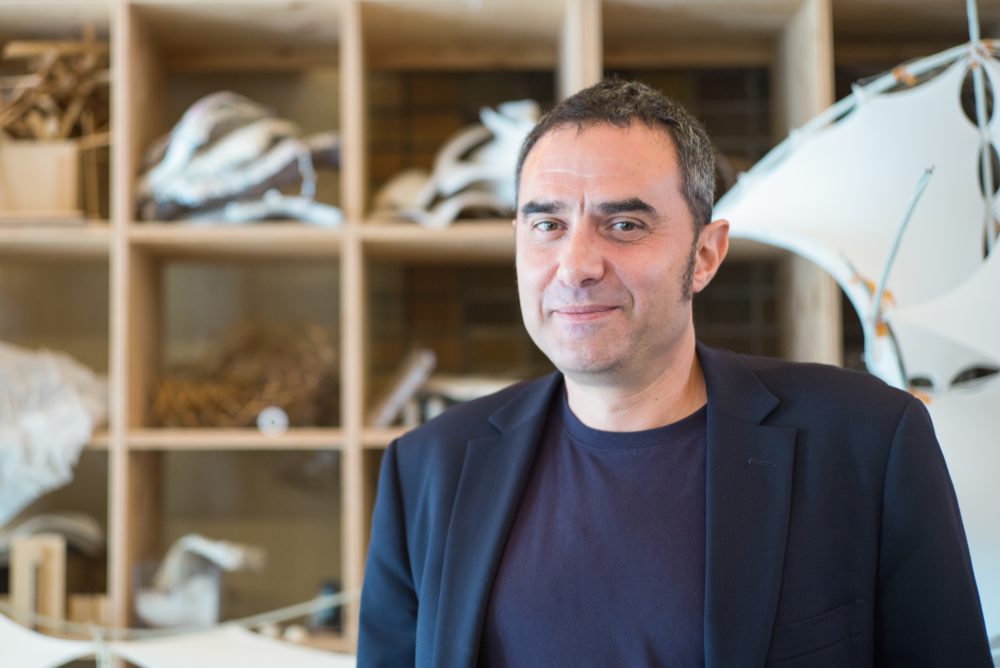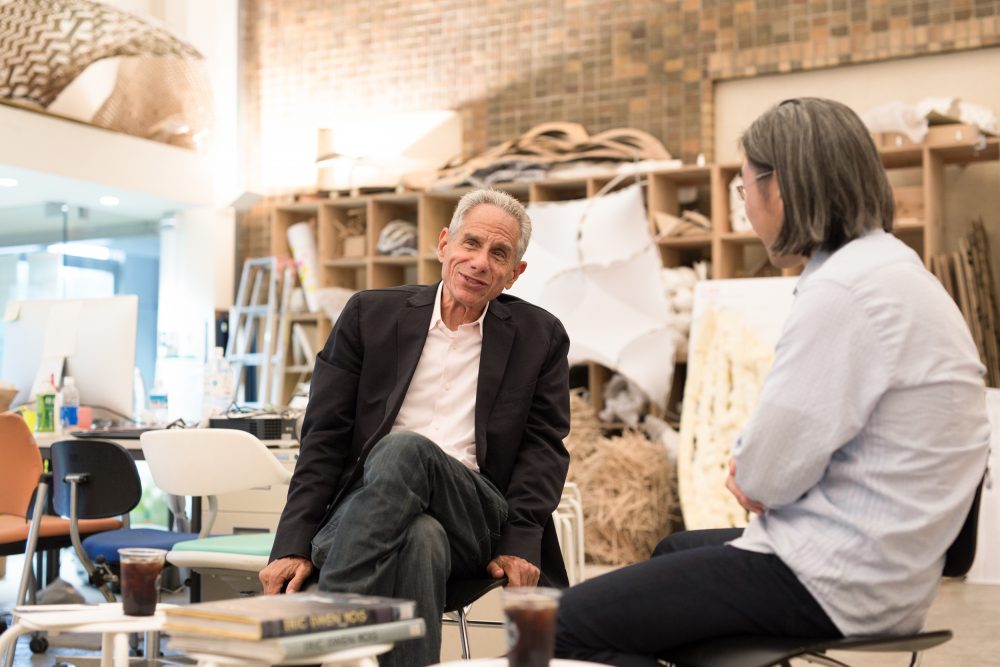
Series THE SAGA OF CONTINUOUS ARCHITECTURE
The Window Works at the Existential and Philosophical Level
02 Nov 2016
- Keywords
- Architecture
- Conversations
- Interviews
Windows will never cease to work, change, and evolve. In the final session of this interview series, Yusuke Obuchi speaks with world-renowned architectural critic Jeffrey Kipnis, who has previously taught at Harvard University and the Cooper Union. Kipnis describes the windows he imagines might emerge from the continuously updating history of architecture.
Yusuke Obuchi (hereinafter referred to as Obuchi): In one of your seminar classes at Princeton, you teach a session on windows. Could you tell us what is it about?
Jeffrey Kipnis (hereinafter referred to as Kipnis): The architectural effects of a window have nothing to do with your description of the everyday building effect. The reason there are so many different windows is because the architectural effect is totally different than letting light, air, and views through windows.
Every architect uses windows totally differently to take advantage of light, air, and views, but windows also frame views, change reflections, and do all sorts of things. They work at the existential and philosophical level, not at the functional level of building.
Have you ever been to a Gothic cathedral? Why is the door so big?
Obuchi: To represent sacredness?
Kipnis: It doesn’t represent it. See, this is the other idea. It’s not about producing a meaning that you interpret; it’s about producing a feeling.
When you walk through those doors you leave the ordinary world and you are made to feel very small by the gigantic doors because you are now in the world of God. This effect—doors and windows and this Palladian window—is not about light, air, views, getting in, getting out, or how big the body is. It’s about the ways architecture does profound work and why architects have to know—to learn—to think like this. So, the way you learn to think is not by considering what a window does, as if there is a definition. You go back to your mind and you think about famous windows by Le Corbusier, by Mies van der Rohe, by Palladio. You think about how each of those does something different. Then you are an expert architect.
It’s not even obvious when and from where you should look at the architectural work at the window; whether it should be from the outside, from the inside, or should be from both ways. That’s up to the architect. A window can continue to work architecturally differently, but it can also change. It constantly changes and evolves. The same window in the same building evolves in its work as more architecture gets produced.
It’s not just about windows. It’s about every design discipline having a level of expertise about the magical performances of their material.
Obuchi: So you’re not denying the functionality.
Kipnis: No, it’s important.
Obuchi: But at the same time you don’t want to end it there.
Kipnis: No, it’s the functionality that lets the magic be possible.
Obuchi: How has digital technology affected the ways in which windows are conceived?
Kipnis: Digital technology, because of surface modeling, made complex forms easy. Like Embryological House by Greg Lynn. How to put a hole in that for light was a gigantic design problem. It took almost 15 years for anybody to even figure it out. In architecture, if you get a new form, it becomes extremely difficult to figure out how to put an old window in a new form. The answer to your question is they now understand the aperture part but they still don’t understand the glazing so they haven’t solved the window problem.
Architecture is writing instructions and they have to be instructions for a known instrument. A composer can’t write music and invent the instrument every time, so there is a big difference between the craft and building a house. Anybody can do a custom made house. Architects have to buy stuff off the shelf, spec.
It can be custom but if every time you do something it’s custom, it’s not architecture. It’s not entering into the general economy of architecture. And that’s the problem. The problem is you don’t ever want architecture to be that individualized but you do want it to be customizable in a manufacturing way.
-
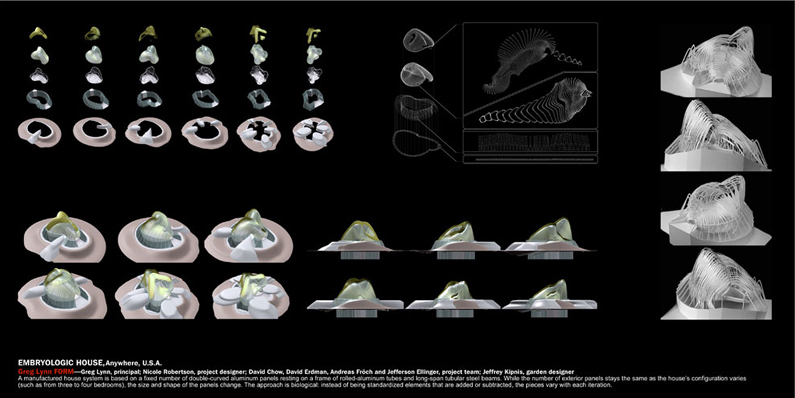
Embryological House ©Greg Lynn FORM
-
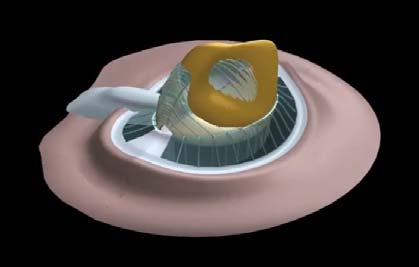
Embryological House ©Greg Lynn FORM
Obuchi: As with Greg’s Embryological House, do you think digital technology has created a fundamental shift, amplified problems, or exposed difficulties in architecture?
Kipnis: A few lucky people, like in your generation, started with traditional training and went to digital. They used both.
There’s nothing wrong with that. I am not here to say you should go back and do the other thing, but if you know about the other because you have been in the class, you don’t have to do it. If you just know about it and one of your competitors doesn’t know about it you are going to have a fantastic advantage because you can stop and say, “You know what? I am not going to just take a cut of this plan, I am going to actually draw the plan as a separate object, study it for something and then get the two to work together.”
There is nothing wrong with what’s happening. I’m not complaining about that. I am just pointing out that it’s going to produce a completely different kind of intelligence and a completely different kind of architectural thinking. Right now there is some advantage to knowing both parts. It won’t last very long. Pretty soon everybody in the world will have designed and lived in object-based designs and that will be the history of architecture. That’s the future of architecture. Digital technology, advanced materials, and finite element analysis have changed the entire ecology of architecture. As a discipline, architecture is only about 30 years old. It’s not 5000 years old. It’s not 500 years old. It’s about 30 years old, which is why it’s so exciting.
Architecture is extremely conservative because it works psychologically. If you are going to be in business you have to sell a lot of windows. In architecture that means you have to be very conservative about the windows but that doesn’t mean you shouldn’t understand the effect of advanced windows.
There are principles you can learn very quickly. Like, you can’t just say “a window” when you mean “a window in a kitchen.” This has been done already; you make windows that are for very specific rooms because you think there are generic ideas about what the room does, and what you want to do is have enough flexibility in your product and show that really it’s mostly about showing how your windows are used differently by architects than they are by developers.
Jeffrey Kipnis
Jeffrey Kipnis is an educator, theorist, and critic. He is a professor in the Department of Architecture at Ohio State University and the curator of Architecture and Design at the Wexner Center for the Arts. Kipnis has taught at Harvard University, Cooper Union, and Columbia University. He founded and was the first Director of the Graduate Design Program for the Architectural Association of London. He collaborated on the design of the Water Garden project in Columbus, Ohio and the Kansai-Kan National Diet Library with architects Reiser + Umemoto. He received the Academy Award in Architecture from the American Academy of Arts and Letters in 2009. His written works have been featured in El Croquis, Architectural Design, Log, and Harvard Design Magazine.
Yusuke Obuchi
Born in Chiba Prefecture in 1969. University of Toronto Department of Architecture from 1989-1991. Roto Architects from 1991-1995. Graduated Southern California Institute of Architecture in 1997. Completed Princeton Graduate School Master’s Course in 2002. RUR Architecture from 2002-2003. Course Master, AA School from 2003-2005. Director, AA School Design Research Lab from 2005-2011. Instructor, Harvard Graduate School of Design in 2013. Visiting Associate Professor, Princeton Graduate School from 2012-2013. Project Associate Professor, The University of Tokyo from 2010-2014. Associate Professor, The University of Tokyo from 2015-present.
http://t-ads.org/
http://obuchi-lab.blogspot.jp/


